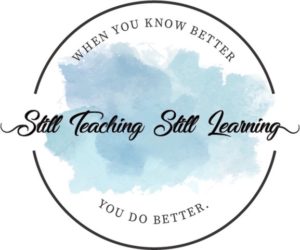
The first day of school is a little unpredictable in terms of time. Since you will be introducing so many classroom routines and procedures and doing community-building activities, you might not actually start your academic work blocks on the first day. Still — you want to emphasize the importance of the subjects you teach, especially reading.
Here are 15 ideas you could try to get your reading block started during the busy first days of school!
1 – A fun way to emphasize the importance of reading is to use several read alouds during the first days of school. Even if you teach one subject such as math or science or social studies, there are some great books you could read during the first few days. Here’s a link to my list!
HERE is my post about great picture books to introduce and HERE is my post about great chapter books to begin reading at the beginning of the year.
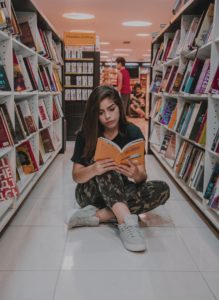


2 – You will probably want to introduce your students to your classroom library on the first day of school. There are many ways to do this.
Here are some tips:
~if you have a large classroom library, you might want to only put part of it out at the beginning of the year. This keeps students from being overwhelmed by all the choices. Another good thing about this tip is that it adds novelty and interest when you introduce more book bins throughout the year.
A big drawback to this idea: you might not have space to store the books you are not introducing yet. So do whatever is easiest for you.
~you might pull a selection of different books from different genres and put them in one bin for each table. Then, when it’s time for your first independent reading time, you can place the bins on each table and allow students to select books from the bin.
You could even rotate the bins halfway through the independent reading time if you want. When I tried this, I did allow kids to keep reading the book they had chosen from their first bin if they found one they wanted to keep.
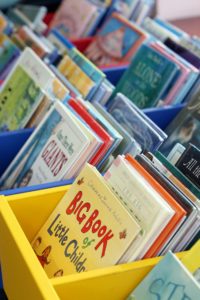


~before you let your students explore, you might want to discuss some of the following procedures with them. It also helps to make anchor charts for these procedures and post them near the library.
1 – how to check out and return books
2 – how to take care of and protect books
3 – how the library is organized
~consider making “classroom librarians” a class job. These students would be in charge of returning books to the appropriate bins once or twice a week. While I find this to be a tedious process, I am always amazed at the number of students who really like this job!



~after you point out how the library is organized, let everyone explore the library but not take a book yet! The point of this is to allow students to “shop” for books and get acquainted with the library first. Give them about ten minutes for this activity.
~when students have returned to their seats, draw names or call students one by one to go to the library and get whatever book they want to read. Do this a couple more times so that every student has three books from the library to keep in their cubby as a start.
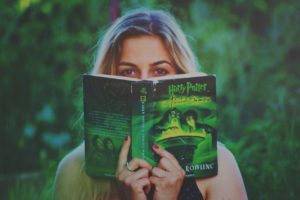


3 – To start my reading block instruction, I like to give some kind of reading survey. Here are a couple of examples HERE and HERE.
When you give a survey to students, you are collecting information about your students’ attitudes about reading and their reading interests. You could also create these surveys with Google forms.
This is also a great activity to repeat later in the year, such as at the end of a quarter or end of a semester.
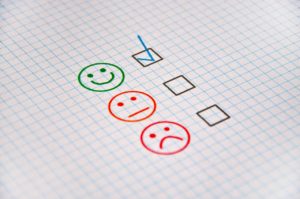


4 – I just saw this activity in a Facebook group and I’m thinking about doing it this year. It’s free on Teachers Pay Teachers. This looks like a fun way for kids to share their reading interests. Putting it together might prove to be a bit challenging, but there is a video that shows directions. I’ll let you know how it goes!
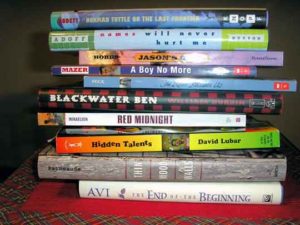


5 – As soon as possible, I set up routines for independent reading time. We talk about what it should be like and sound like in our classroom and we usually make a chart of these expectations. While many teachers allow their kids to sit anywhere in the room for independent reading, I don’t do that at first. I have kids remain in their seats for the first couple of weeks.
Part of the reason for this is that I like to observe their engagement and their reading stamina and it’s easier to do this when everyone is sitting where I can see them easily!
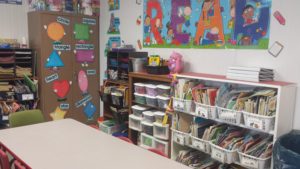


6 – Give independent reading time daily and assess your students’ reading stamina. You might start with a shorter amount of time and gradually work up to your planned amount of independent reading time.
Here is a printable engagement inventory from Jennifer Serravallo, author of The Reading Strategies Book.
Make note of which students may need help getting started with finding appropriate books that they will enjoy reading and which students have difficulty staying focused on reading during the entire time.
Watch for a future post on what you can do to help readers who struggle with engagement or stamina soon!
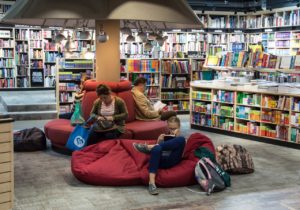


7 – Start reading a great chapter book with your students. I wrote a post about great novels for upper elementary classrooms HERE. One of the best ways to get kids hooked on reading is to read aloud to them every single day.
8 – You might incorporate “status of the class”, which is a quick check-in with students at the beginning of independent reading. I just go down my class checklist & call out names. As each student’s name is called, they tell me what book they are reading today. I then use this information to check in with students who need help finding a book they want to stick with or finding a new book to read.
One thing I liked about the status of the class is that students also hear what other students are reading, which generates some excitement about different books and helps kids see which other students share their reading interests.
However, this does take a few minutes to do, so I typically only do it two days a week.



Last year, I also used Google docs for an occasional digital status of the class. Both my students and I really liked doing that, and it saved a ton of time. I was thinking about how I might try to do that this year and I found THIS article by Maria Caplin on Choice Literacy.
Here is an example of the spreadsheet of her students’ responses.
I’m going to try a version of that this year. I’ll report back on how it goes! I’d love to hear your tips if you try doing something like this.
9 – Begin daily book chats in which you “advertise” books in your classroom library. I love Pernille Ripp’s post on how to easily do a book talk.
I then “auction off” the book or books I introduced by drawing names and offering that child an opportunity to read the book. If they don’t want it, I draw another name until I find someone who wants to read the book.
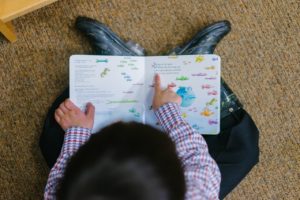


10 – If you have never read Donalynn Miller’s book The Book Whisperer, it is a teacher must read. You might have heard of the “40 Book Challenge” or something similar on Facebook, Instagram, or Teachers Pay Teachers. That idea came from her book, but it has been altered in different ways by different people, not all of it in positive ways. Donalynn wrote a blog post about this a few years ago HERE.
Here are two of her important thoughts about the 40 Book Challenge:
Honestly, I don’t care if all of my students read 40 books or not. What matters is that students stretch themselves as readers and increase their competence, confidence, and reading motivation through their daily participation in our reading community. The 40 Book Challenge works for my students and me and for the many teachers successfully implementing it because of these core beliefs:
Everybody reads here. Let’s get started. Our direct influence on students’ reading lives lasts 40 weeks—36 weeks of school and 4 weeks of school vacation. Setting high expectations (roughly a book a week) communicates that reading is ongoing and continues from the first day of school to the last— hopefully longer. Students should spend more time reading than they spend completing reading-related activities like worksheets, reading responses, and projects. Students who read the most will always outperform the students who don’t read much (Krashen, 2004).
11 – If you are looking for some lessons for introducing your reading block, consider the lessons in Reading Wellness by Jan Burkins & Kim Yaris. The book has six, easy to implement lessons that effectively introduce and teach several key reading skills that will underlie all reading instruction for the year while getting kids engaged and excited about reading.



12 – Curriculum Corner is one of my favorite websites for quick activities. They have a great resource for launching reader’s workshop HERE.
13 – Tammy at Tarheel State Teacher has tons of great resources on her site. I love her free lesson for launching reading workshop HERE.
14 – The conferencing forms on the Curriculum Corner site are also helpful.
Other helpful forms on their site: written response to read alouds HERE and writing summaries of mini-lessons HERE.
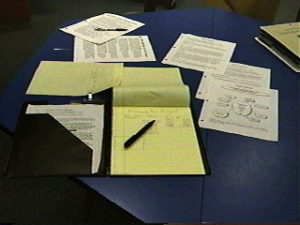


15 – Since you will have forms and assessment data and lesson plans for reading groups, you will want to figure out the best way for you to keep it organized. There are many ways to organize for reading instruction, but using a binder is especially helpful. Here are suggestions from Curriculum Corner for setting up a binder to manage your reading workshop.



I hope some of these ideas help you get started! I would love to hear your ideas too.
In my next post, I will list some suggestions for getting started with your writing workshop block!
